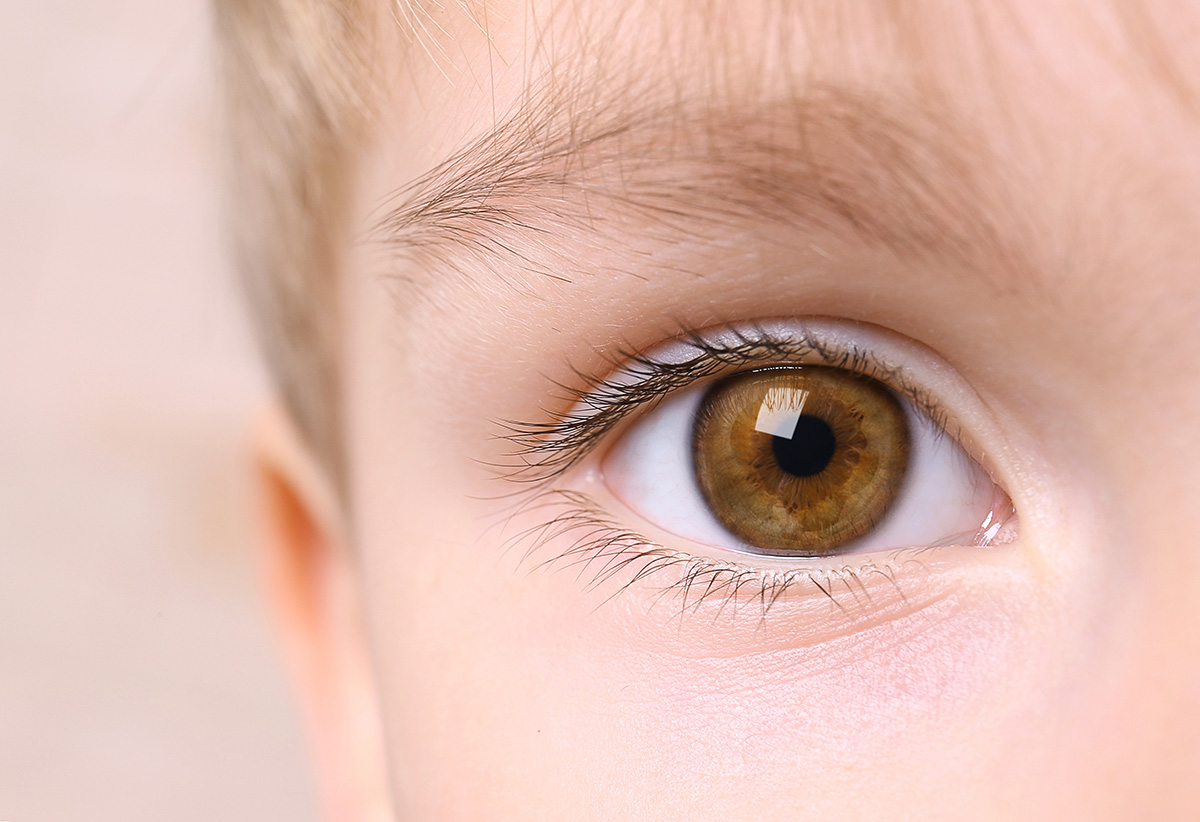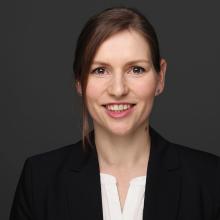Low-level red light therapy for myopia control

DOI: https://doi.org/10.54352/dozv.XPIK5369
Apart from the previously evaluated therapies to control myopia progression in children, such as low-dose atropine, orthokeratology, multifunctional soft contact lenses and spectacle lenses with D.I.M.S. technology, the effectiveness of irradiation of the eyes with low-dose red light, low-level red light therapy (RLRL/ LLRL), has recently been confirmed by several studies in China. In the controlled studies with Chinese children aged six to 16 years, LLRL showed a positive control effect on the spherical equivalent (SA) and axial length growth (AL) over a daily application period of six to twelve months.
LLRL involves direct and repeated exposure of the macula to red light. The safety of LLRL with regard to possible photochemical and thermal damage to the retina has not yet been conclusively clarified.
Results of studies on low-level red light therapy (LLRL)
Salzano et al.1 compared the methods and procedures of individual studies on myopia control using red light treatment in a review article. All studies performed the procedure with red light devices using a wavelength between 650 ± 10 nm. Across all studies, LLRL was applied to the subjects twice daily for three minutes on at least five to seven days/week for six to twelve months or longer. There was an interval of at least four hours between the individual applications.
The use of LLRL over a period of twelve months resulted in reduced myopia progression as measured by the mean spherical equivalent (SEQ) at a confidence interval of 95 per cent of 1.23 ± 0.18 dpt,2 0.69 ± 0.19 dpt,3 0.60 ± 0.40 dpt,4 0.59 ± 0.13 dpt.5 The studies and others by Dong et al.6, Tian et al.7 and Xiang et al.8 showed a successful reduction in the progression of SEQ after just six months. If the axial length of the eye (AL) is considered in addition to SEQ, the studies also confirm the slowing of myopia progression. With a duration of LLRL use between six and twelve months, AL progression was reduced by 21 per cent to 63 per cent compared to the control groups that wore single vision lenses5,6,7,2 or underwent 0.01% atropine treatment9. Dong et al.6 also exposed the control group to a red light with the usual LLRL intensity reduced to ten per cent and were also able to measure a reduced increase in AL of 0.13 mm in this group compared to the assumed physiological increase in AL of over 0.20 mm within the six-month period.
The authors concluded that myopia control by LLRL was successful even at low treatment intensity. In their study, Jiang et al.5 compared the effect of different levels of compliance within the cohort. Even with reduced use of the procedure, myopia progression was slowed. Patients with a compliance of > 75 per cent had a reduction in AL progression of 76.8 per cent, while patients with a compliance of < 50 per cent had a reduction in AL progression of 44.6 per cent.
When LLRL was applied over a period of 24 months, Xiong et al.4 demonstrated a long-lasting, positive myopia control effect with LLRL. Within this period, axial length growth changed by 0.16 mm compared to an increase of 0.64 mm in the control group without LLRL.
Rebound effect and effectiveness
Two of the studies analysed by Salzano et al.1 investigated the changes in AL and SEQ after the end of LLRL. In the study by Chen et al.3, AL increased by 0.20 mm within three months of the end of treatment. Xiong et al.4 determined the rebound effect after one year. They compared the LLRL group, which switched to single-vision spectacles after treatment, with the control group, which wore spectacles continuously. The AL in the control group increased by 0.28 mm (n = 41), while the AL of the other group, which received LLRL beforehand, increased by 0.42 mm (n = 52).
The exact effect of LLRL has not yet been sufficiently investigated, which is why the procedure has not yet received FDA approval for myopia control. In this context, a study by Ostrin and Schill 10 investigated the thermal and photochemical maximum permissible exposure (MPE) on the retina of two LLRL devices that are currently used for myopia control. For the devices Sky- n1201a, which uses a wavelength of 654 nm, and Future Vision, which uses a wavelength of 652 nm, the calculated MPE for photochemical damage was 50 - 625 s at a pupil diameter of 2 - 7 mm. After three minutes of continuous LLRL on the model eye, both devices approached or exceeded the MPE. This led the authors to conclude that the retina may be at increased risk of photochemical damage with these devices. They point out that caution should be exercised when using these devices for myopia control until uniform safety standards have been clinically confirmed.
Salzano et al.1 assume an impairment of retinochoroidal metabolism or cellular toxicity, which leads to structural damage to the scleral collagen, resulting in reduced AL. An increased choroidal thickness, which was measured during LLRL treatment and decreased again after the end of treatment, could also be responsible for the reduced AL and the subsequent rebound effect.
Outlook
To date, there is a lack of long-term studies on the control of myopia with LLRL in different populations to confirm long-term effectiveness compared to other therapies. Furthermore, additional clinical examinations of the retina are recommended to rule out possible damage caused by red light. Salzano et al. summarise it as follows: "For any myopia control mechanism, including low-level red light, safety of the treatment must be paramount."1
Literatur
[1] Salzano, A. D., Khanal, S., Cheung, N. L., Weise, K. K., Jenewein, E. C., Horn, D. M., Mutti, D. O., Gawne, T. J. (2023). Repeated Low-Level Red-Light Therapy: The Next Wave in Myopia Management? Optom Vis Sci, 100, 812–822.
[2] Zhou, L., Tong, L., Li, Y., Williams, B. T., Qiu, K. (2023). Photobiomodulation Therapy Retarded Axial Length Growth in Children with Myopia: Evidence from a 12-Month Randomized Controlled Trial Evidence. Sci Rep, 13, 3321.
[3] Chen, H., Wang, W., Liao, Y., Zhou, W., Li, Q., Wang, J.,Tang, J., Pei, Y., Wang, X. (2023). Low-intensity red-light therapy in slowing myopic progression and the rebound effect after its cessation in Chinese children: a randomized controlled trial. Graefes Arch Clin Exp Ophthalmol, 261, 575–584.
[4] Xiong, R., Zhu, Z., Jiang, Y., Kong, X., Zhang, J., Wang, W., Kiburg, K., Yuan, Y., Chen, Y., Zhang, S., Xuan, M., Zeng, J., Morgan, I. G., He, M. (2022). Sustained and Rebound Effect of Repeated Low-level Red-light Therapy on Myopia Control: A 2-year Post-trial Follow-up Study. Clinical Exper Ophthalmology, 50, 1013–1024.
[5] Jiang, Y., Zhu, Z., Tan, X., Kong, X., Zhong, H., Zhang, J., Xiong, R., Yuan, Y., Zeng, J., Morgan, I. G., He, M. (2022). Effect of Repeated Low-Level Red-Light Therapy for Myopia Control in Children. Ophthalmology, 129, 509–519.
[6] Dong, J., Zhu, Z., Xu, H., He, M. (2023). Myopia Control Effect of Repeated Low-Level Red-Light Therapy in Chinese Children. Ophthalmology, 130, 198–204.
[7] Tian, L., Cao, K., Ma, D.-L., Zhao, S.-Q., Lu, L.-X., Li, A., Chen, C.-X., Ma, C.-R., Ma, Z.-F., Jie, Y. (2022). Investigation of the Efficacy and Safety of 650 Nm Low-Level Red Light for Myopia Control in Children: A Randomized Controlled Trial. Ophthalmol Ther, 11, 2259–2270.
[8] Xiong, F., Mao, T., Liao, H., Hu, X., Shang, L., Yu, L., Lin, N., Huang, L., Yi, Y., Zhou, R., Zhou, X., Yi, J. (2021). Orthokeratology and Low-Intensity Laser Therapy for Slowing the Progression of Myopia in Children. BioMed Research International, 2021, 1–10.
[9] Chen, Y., Xiong, R., Chen, X., Zhang, J., Bulloch, G., Lin, X., Wu, X., Li, J. (2022). Efficacy Comparison of Repeated Low-Level Red Light and Low-Dose Atropine for Myopia Control: A Randomized Controlled Trial. Trans. Vis. Sci. Tech., 11, 33.
[10] Ostrin, L. A., Schill, A. W. (2024). Red Light Instruments for Myopia Exceed Safety Limits. Ophthalmic Physiologic Optic, opo.13272.
